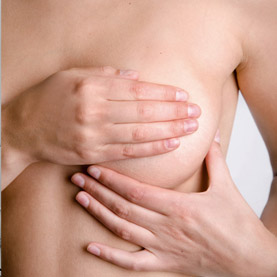 3 Lifesaving steps.
3 Lifesaving steps.
October is breast cancer awareness month and at HC Marbella we would like to encourage all women to incorporate self-examination into their daily routine, this method of early breast cancer detection can save lives. Our specialists at HC Marbella’s Breast Cancer Unit respond below to your queries on breast self-examination.
Breast self-examination is a simple technique used by women to familiarise themselves with their breasts. If performed regularly and correctly, it can help with early detection of some types of breast cancer, however it should not be relied on alone and should not replace early detection using imaging techniques such as mammography.
All healthy women should take care of their breasts. Please see the following suggested guide on how to do this:
• Asymptomatic women at low risk.
From age 20:
– Monthly self-examination.
– Gynaecological check-up every two years.
From age 40:
– Monthly self-examination.
– Yearly medical examination.
– Mammogram every one to two years.
• High risk: Those who have a first degree family member with a history of breast or ovarian cancer when young, or those who have personal risk factors for breast cancer.
Screening should start at age 25 or at 10 years younger than the age of the affected family member when diagnosed.
Breast examination is ideally performed after your period, as prior to a period breasts undergo changes including inflammation and fluid retention secondary to the action of oestrogen. This makes distinguishing breast lobules from true nodules difficult. Therefore breast examination should be carried out once a month, after your period. At first it may seem a little difficult but if you familiarise yourself with your breasts you will learn how to distinguish normal changes from abnormal ones.
Firstly you should position yourself in front of a mirror and follow the following steps:
1) Inspection:
This is perhaps the easiest part and involves simply looking at your breasts in the mirror. Palpation is more difficult, however even by simply looking you can spot important signs.
Thorough inspection of the breast provides important details such as how possible nodules affect the skin.
Breasts should be examined with the arms down and then with the arms in the air. This movement allows you to see changes in the skin caused by nodules.
It is very important to check the lower parts of the breast as you don’t normally see these.
In the case of benign cystic nodules or fibroadenomas, the skin is free.
Malignant nodules adhere to the skin, they cause skin retraction and dimpling.
This can produce asymmetry in the shape and sometimes in the size of the breast.
Skin changes such as reddening, orange peel appearance or increased thickness are also signs for alarm.
The nipple-areola complex also requires examination.
Retraction of the nipple or changes in its direction, most likely to be seen when lifting the arms above the head, demonstrate possible suspicious nodules which are pulling on the nipple and changing its shape.
2) Palpation:
Palpation can be performed when standing in the shower or when lying down. Lift the arm on the same side as the breast which is going to be examined. With the opposite hand, starting at 6 o’clock, using the flat pads of the fingers as if they were the hands of a clock, rest them the on the breast and make circular movements in a clockwise direction. Do not forget the area behind the nipple.
Check that the nipple is free, pulling it a little. Try to express from the nipple to check for the possible production of secretions.
3) Examination of the armpits is also very important to check for lymph nodes:
If you discover any of these signs or you have any queries you must go to see your gynaecologist.
In the Gynaecology Unit at HC Marbella, you will be looked after by specialists in breast disease who will keep you informed whilst performing all the procedures required to make a rapid diagnosis.
The first consultation with a patient after she has noticed a lump in her breast is very important in guiding diagnosis. Essential information is obtained regarding the patient’s personal gynaecological and breast history as well as family history.
After a detailed examination, the specialist will recommend the most appropriate imaging test depending on the results and the age of the woman.
At HC Marbella we have radiologists who are experts in breast disease and who are able to perform both the imaging tests and interventional procedures which may be required.
October 4, 2020
Read other news
Tel.: +34 952 908 628
+34 609 148 799
952908898 Oncology
951829978 Diagnosis by imaging
951829947 Gynecology
952908897 Fertility
951829947 Physiotherapy